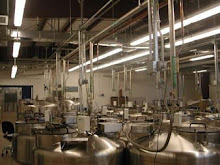
Overfilling problems occur When LN2 liquid nitrogen contacts with the pumpout plug or body for an extensive period of time. Extreme cold temperatures cause the o-rings to contract and harden, which can cause the o-rings to temporarily lose their sealing properties. Since all manufacturers utilize the same o-ring design, this problematic scenario can occur on any liquid nitrogen dewar. The plastic cap will not stop this from happening but will lengthen the time it takes for failure to initiate. It is vital that the pumpout remains covered. Liquid nitrogen may crack the plastic cap if it is spilled on it, (a sign of improper filling), and therefore a replacement cap should be applied to the pumpout without delay. These caps are inexpensive and MVE will supply replacement pumpout caps when they are needed.
Years ago, MVE made use of a metal cap that held on to the pumpout body. Even though this kept dirt particles from distressing the o-rings, it did not alleviate pressure sufficiently and became a liability matter. For a short while, we used a hard plastic cover that relieved pressure but did not guard the plug from dirt. The design we presently use appears to be the safest and easiest method of shielding the o-rings without adding to the cost of the liquid nitrogen dewar. Although there are different styles, depending on the manufacturer, this appears to be the common design practiced throughout the industry. This filling safeguard is particularly significant on liquid nitrogen vapor shippers where the margin for failure recovery is even less. Liquid nitrogen vapor shippers are usually warm when LN2 liquid nitrogen charging is required. Because of the smaller inner volume and the additional liner to be cooled down, the initial flash off is far greater then if the liquid nitrogen dewar was cold. It is due to this fact that the liquid nitrogen vapor shippers usually require additional filling during the charging cycle. Proper filling directions are listed in the manuals provided with each MVE liquid nitrogen dewar, both liquid and vapor.
Visit Princeton CryoTech for more useful articles!

No comments:
Post a Comment